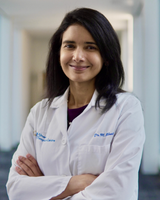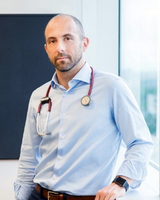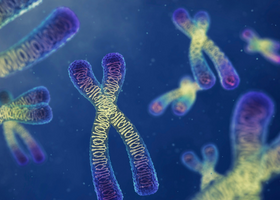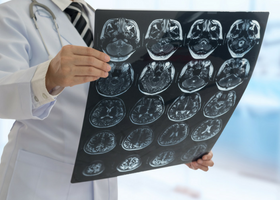Liver Disease
Chronic liver disease affects one in four Canadians. There are over 100 different types of liver disease caused by a variety of factors such as viruses, toxins, genetics, alcohol and other unknown causes. One of the most common liver diseases in Canada is non-alcoholic fatty liver disease (NAFLD), which affects over seven million Canadians. NAFLD is caused by the accumulation of fat in liver cells, primarily as a result of obesity, insulin resistance, high blood sugar or high levels of fats in the blood. As fat accumulates in the liver it becomes inflamed and scarred. If left untreated, this scarring becomes cirrhosis, late-stage liver damage, and can lead to liver cancer, liver failure, and other complications.
In-hospital procedures for liver disease patients – including transplants – have cost the health system an average of $39 million annually according to the Canadian Liver Foundation And for the hundreds of Canadians waiting for a liver transplant, many never receive it. Data from the Canadian Institute for Health Information shows that between 2016 and 2021 an average of 94 patients die annually while waiting for a liver transplant.
Stem Cell Network researchers are working to lessen the impact of liver disease on Canadians, hoping to develop novel therapies with the goal of extending patients’ lives. Researchers are studying scarred livers, liver organoids and potential new therapies to better understand how we might heal damaged livers and treat liver diseases like non-alcoholic fatty liver disease, cirrhosis and liver cancer. From 2019-2025, SCN has committed over $1.8 million in research funding for liver diseases.
 Restoring regeneration in chronic liver disease
Restoring regeneration in chronic liver disease
Dr. Mamatha Bhat, University Health Network
The liver has an amazing capacity to regenerate and heal itself. However, in chronic liver disease patients, the liver is damaged and scarred and the capacity for the liver to heal and regenerate itself is much lower. Dr. Bhat and her team are studying scarred livers using state-of-the-art imaging and bioinformatic techniques to learn more about healing pathways in scarred livers and find new therapeutic targets. Once they know exactly which mechanisms will restore healing in scarred livers, the team will use their expertise in bioengineering and gene therapy to create new therapies and one day hope to provide new, targeted treatments for chronic liver disease patients.
“One in four Canadians are affected by liver disease – and I have seen many of these patients in my clinical work as a transplant hepatologist. For many patients waiting for a liver transplant, a match will never be found, so new therapeutics that extend the lives of patients with liver disease are desperately needed. My research program aims to provide new hope to liver disease patients by developing a novel treatment strategy in the world of transplant and regenerative medicine.” – Dr. Mamatha Bhat
 Stem cell-derived liver tissue for the treatment of acute liver failure
Stem cell-derived liver tissue for the treatment of acute liver failure
Dr. Massimiliano Paganelli, CHU Sainte-Justine, Université de Montréal
Acute Liver Failure (ALF) is an extremely severe syndrome resulting from sudden liver damage (e.g., from a drug, virus, or toxin). Patients suffering from ALF need a liver transplant within days from diagnosis to survive, and it is not always possible to find a donor in time. Dr. Paganelli and his team are using stem cells to create “mini-livers”, or liver organoids, which they combine with special biomaterial to generate what they call an Encapsulated Liver Tissue (ELT). The ELT could provide enough liver function to ALF patients to keep them healthy while their own liver heals or they wait for a transplant. The team is collaborating with Dr. Paganelli’s spin-off company, Morphocell Technologies, to prove that the ELT can replace liver function in pre-clinical models of ALF. The next phase of research will provide supporting evidence for early-phase clinical trials. The team ultimately hopes to provide a new therapy for patients with ALF, acute-on-chronic and chronic liver failure, and several other liver diseases, improving the quality of life of hundreds of thousands of patients worldwide.
“Our Encapsulated Liver Tissue has already been recognized as a very promising and disrupting treatment that has the potential to change the way we approach liver disease and save thousands of patients in Canada with acute liver failure. In the future, such a technology might be developed into a treatment for several chronic and metabolic conditions and allow treating millions of people with liver disease around the world.” – Dr. Massimiliano Paganelli
 Developing functional 3D bioprinted liver tissues to eliminate the need for immune suppression
Developing functional 3D bioprinted liver tissues to eliminate the need for immune suppression
Dr. Shinichiro Ogawa, University Health Network
Stem cells can be used to create new, healthy liver cells – but it is very difficult to generate the billions of new liver cells that would be needed to replace the entire liver of a patient suffering from liver disease. Using bioengineering techniques, Dr. Ogawa and his team are working to increase the number of liver cells that can be grown in the lab. Aspect Biosystems is developing implantable cell-containing tissues that protect the encapsulated donor cells from attack by host immune cells. Dr. Ogawa and his team are working with Aspect Biosystems to develop 3D-printed tissue therapeutics containing billions of stem cell-derived liver cells that could ultimately enable synthetic liver implants to improve and extend the lives of Canadians living with liver failure and end-stage liver diseases.
https://www.uhnresearch.ca/researcher/shinichiro-ogawa
“A novel bioprinted cell therapy that combines billions of stem cell-derived liver cells with Aspect Biosystem’s 3D bioprinting technology to produce functional liver implants will provide clinicians with life-saving options that circumvent the donor organ shortage crisis. We are thrilled to collaborate with Aspect on this revolutionary approach to the treatment of liver disease.” – Dr. Shinichiro Ogawa
 Drugs to promote liver regeneration
Drugs to promote liver regeneration
Dr. Michael Underhill, University of British Columbia
There are many types of stem cells in the body. While some stem cells can help to regenerate and heal the liver after damage or disease, there are other types of stem cells that may worsen the damage by contributing to scarring, which ultimately may lead to end-stage organ failure. Dr. Underhill and his team are working to explore the impact of a specific type of stem cell called mesenchymal progenitors (MPs) on liver scarring and regeneration, and hope to demonstrate that deactivation of MPs can reduce scarring and enhance regeneration with the ultimate goal of developing new therapies that will benefit liver disease patients.
https://www.bme.ubc.ca/michael-underhill/
“This project is expected to develop foundational knowledge and critical preclinical data that will be pivotal in advancing mesenchymal progenitor (MP)-based therapeutics into the clinic. We are excited to collaborate with Mesintel Therapeutics, a BC-based biotechnology company, to commercialize innovative MP-based therapeutics that will address an enormous unmet medical need, significantly benefiting the health of Canadians and liver disease patients worldwide.” – Dr. Michael Underhill
 Mechanisms of liver formation in a dish
Mechanisms of liver formation in a dish
Dr. Pamela Hoodless, BC Cancer Research Centre
For patients suffering from liver disease, liver transplantation is a potential cure, but many patients are not matched with a suitable donor in time. Stem cells can be used to make new, healthy liver cells. Dr. Hoodless and her team are working on methods to use stem cell-derived liver cells to make tiny 3D structures called organoids, or “mini-livers”, that act just like real livers and allow for better understanding of liver biology. They plan to use the organoids to study how the different liver cells interact with each other and exactly how their lab research matches up to real-world data, paving a path to someday develop improved treatments for liver disease patients using liver organoids.
https://www.bccrc.ca/dept/tfl/labs/hoodless-lab
“Current treatments for liver disease focus on slowing progression and minimizing complications. We are convinced that by better understanding and improving liver organoid formation, we can generate foundational knowledge that will someday lead to better treatments for liver disease patients and could even lead to the development of synthetic livers that could revolutionize liver transplantation.” – Dr. Pamela Hoodless







